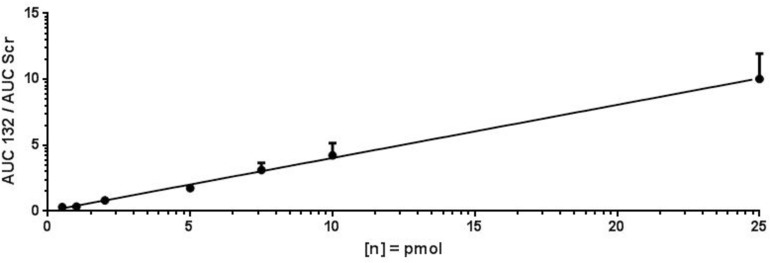Cardiac sicknesses are primarily probably the most frequent causes of demise in industrialized nations. Pathological transforming of the heart muscle is introduced on by a quantity of etiologies equivalent to prolonged hypertension or accidents that will lead to myocardial infarction and in essential situations moreover the demise of the affected particular person.
The micro-RNA miR-132 has been acknowledged as a master-switch throughout the enchancment of cardiac hypertrophy and opposed transforming. In this analysis, MALDI-TOF mass spectrometry (MS) was utilized to find out a sturdy and fast method to sensitively detect and exactly quantify anti-microRNA (antimiR) oligonucleotides in blood plasma.
An antimiR oligonucleotide isolation protocol containing an ethanol precipitation step with glycogen as oligonucleotide supplier along with a sturdy and reproducible MS-analysis course of has been established. Proteinase Okay remedy was important for releasing antimiR oligonucleotides from plasma- along with cell proteins and lowering background derived from natural matrices.
AntimiR oligonucleotide detection was achieved from samples of analysis in a number of animal fashions equivalent to mouse and pig the place locked nucleic acids-(LNA)-modified antimiR oligonucleotides have been used to generate pharmacokinetic information.

Detection of α-defensin in synovial fluids by MALDI-ToF mass spectrometry as revolutionary and worth environment friendly assay for improved definition of periprosthetic joint infections.
α-Defensins detection in synovial fluid is gaining more and more extra curiosity throughout the topic of acceptable evaluation of periprosthetic joint infections (PJIs). At present, they’re usually assessed by a quantitative enzyme-linked immunosorbent assay which is pricey and time-consuming and by a qualitative lateral stream immunoassay which is speedy nevertheless pretty pricey and whose scientific sensitivity is debated.
Thus, creating one other speedy, appropriate, and low-cost α-Defensins assay is crucial to make α-Defensins actionable as novel key scientific marker.Eighteen synovial fluid (SF) samples have been obtained from 18 victims current course of revision of principal joint arthroplasty. Of these, eight met the 2013 Musculoskeletal Infection Society (MSIS) requirements for PJIs, the remaining have been labeled as aseptic failure.
Microbiological analysis and Synovasure have been carried out on all samples. Sample preparation and the MALDI-ToF mass spectrometry setting have been adjusted to detect Human Neutrophil Peptide (HNP)-1, -2 and -Three and to amass optimum ends in time interval of sensitivity and stability.
MALDI-ToF MS was succesful of detect HNPs in SF from septic victims. No HNPs alerts have been detected in SF from aseptic failure. The limit of detection was 2.5 and 1.25 μg/ml for HNP-2 and HNP-1, respectively.
The turnaround time of the analysis is 20 minutes, and SF samples are regular at -20°C for as a lot as Three days. Assay sensitivity, specificity, and constructive and antagonistic predictive values (PPV and NPV) have been 100% for all parameters.
On the equivalent SF samples, the Synovasure assay confirmed lower sensitivity, specificity, PPV and NPV of 87.5%, 90%, 87.5% and 90%, respectively.
Microbiological analysis of SF confirmed the presence of micro organism solely in SF MSIS-positive victims.The reported MALDI-ToF assay was succesful of detect and differentiate HNPs in SF samples and confirmed a barely increased diagnostic accuracy than the Synovasure assay.
